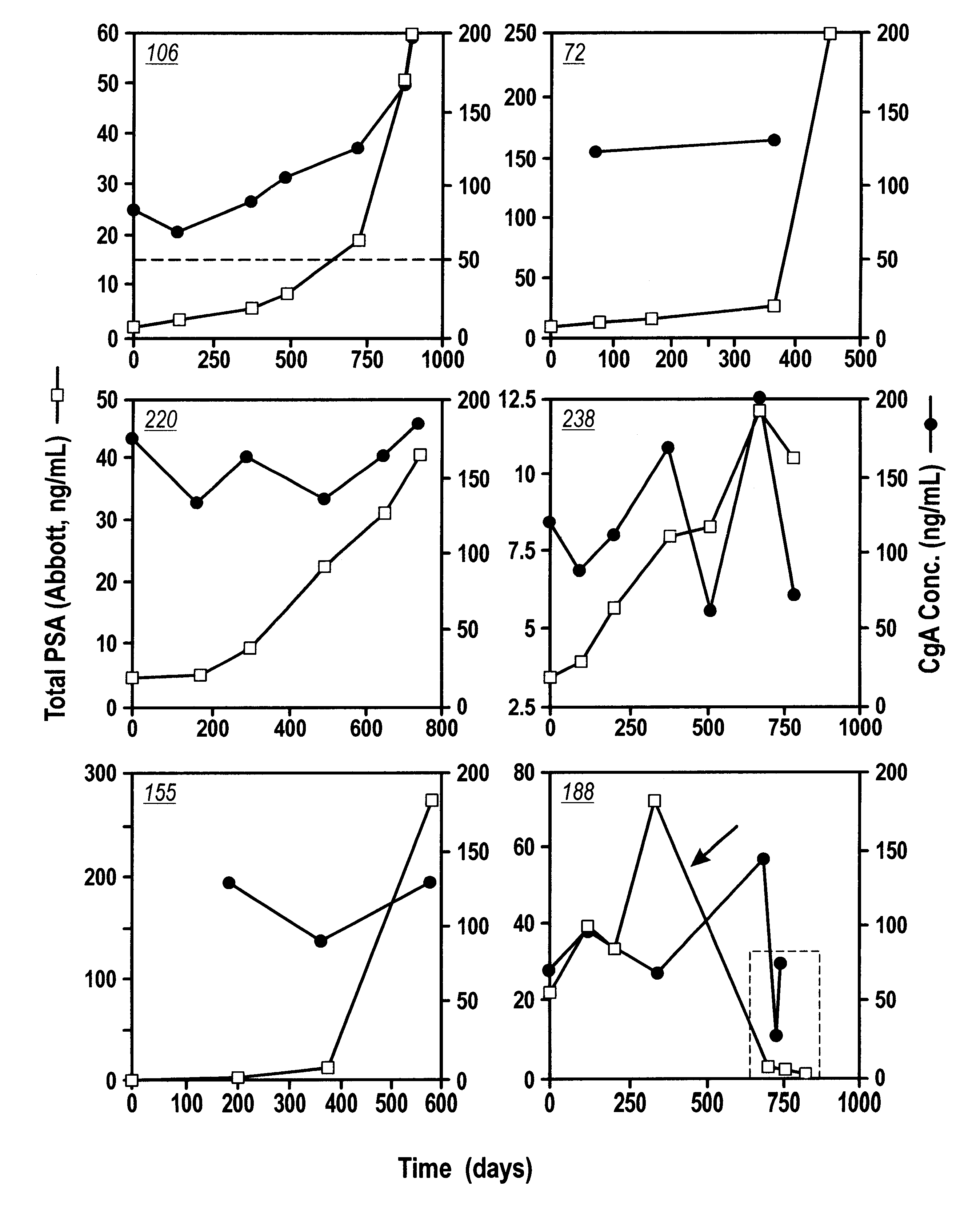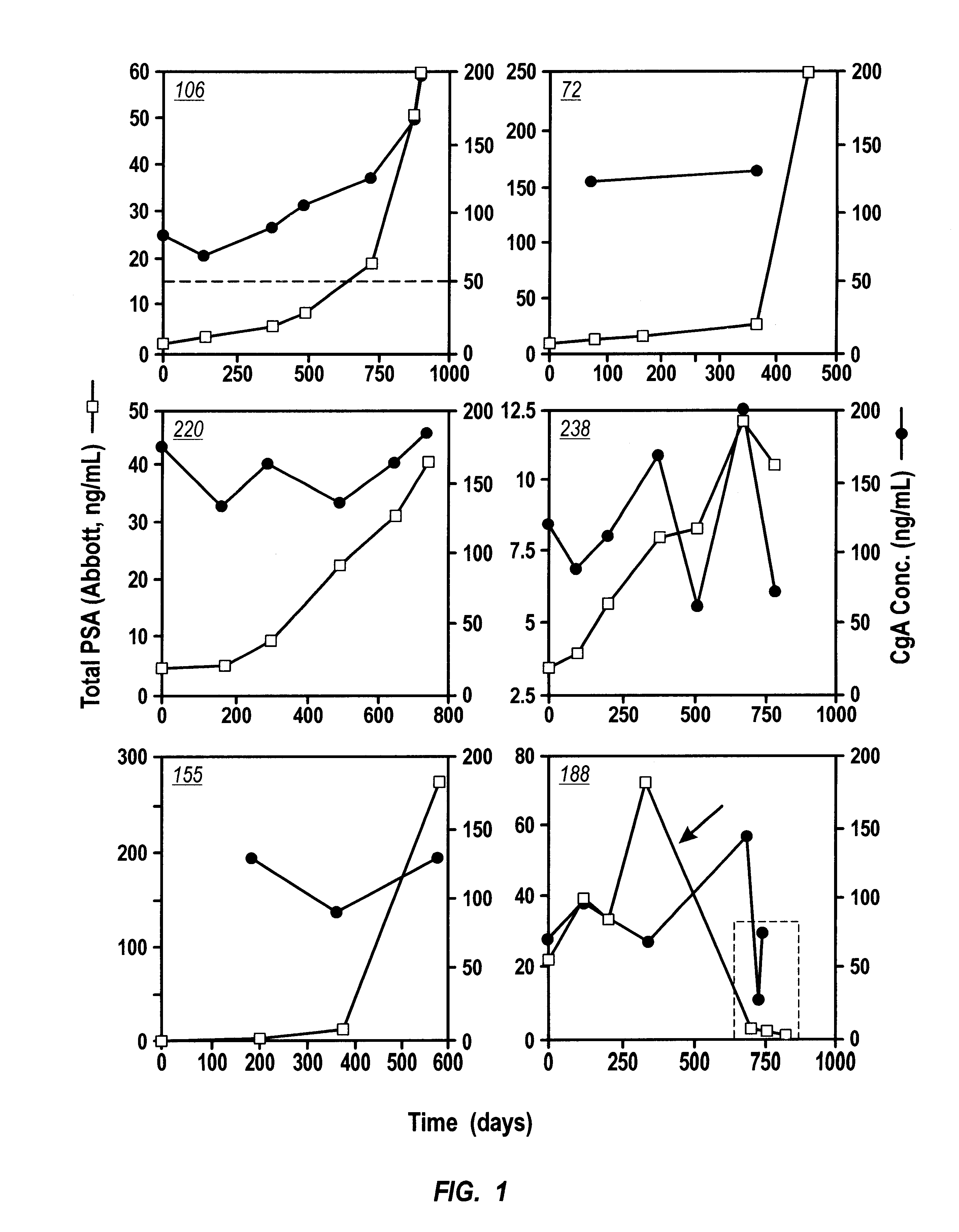Method for prediction prostate cancer patients' resistance to hormonal treatment by measuring serum concentrations of chromogranin A
- Summary
- Abstract
- Description
- Claims
- Application Information
AI Technical Summary
Benefits of technology
Problems solved by technology
Method used
Image
Examples
example 1
Immunoradiometric assay of Chromogranin A. CGA-RIACT, a solid-phase, two-site immunoradiometric assay for the measurement of human chromogranin A, was provided by CIS Bio International (Bagnols-sur-Ceze, France). According to the kit insert, if serum specimens are used, the upper normal limit is 54 ng / mL (mean+1 SD). The serum PSA (or tPSA) was performed on Abbott IMx using Abbot kit.
example 2
Immunoradiometric Assay of Serum NSE. Serum NSE (neuron specific enolase) concentrations were determined using the ELSA-NSE kit, from CIS Bio International. This is a solid phase, two-site immunoradiometric assay using two monoclonal antibodies prepared against sterically remote antigenic sites on the NSE molecule.
example 3
Serum Specimens. All serum specimens were obtained from the Department of Urology, University of Utah School of Medicine. Diagnoses associated with the majority of the samples, whether from patients with BPH or with prostate cancer, were confirmed by clinical biopsies. All specimens had Abbott PSA measured immediately after blood drawn and were then kept frozen at -70.degree. C. for different lengths of time, several months to several years, before they were subjected to other measurements.
PUM
| Property | Measurement | Unit |
|---|---|---|
| Density | aaaaa | aaaaa |
| Density | aaaaa | aaaaa |
| Concentration | aaaaa | aaaaa |
Abstract
Description
Claims
Application Information
 Login to View More
Login to View More - R&D
- Intellectual Property
- Life Sciences
- Materials
- Tech Scout
- Unparalleled Data Quality
- Higher Quality Content
- 60% Fewer Hallucinations
Browse by: Latest US Patents, China's latest patents, Technical Efficacy Thesaurus, Application Domain, Technology Topic, Popular Technical Reports.
© 2025 PatSnap. All rights reserved.Legal|Privacy policy|Modern Slavery Act Transparency Statement|Sitemap|About US| Contact US: help@patsnap.com



